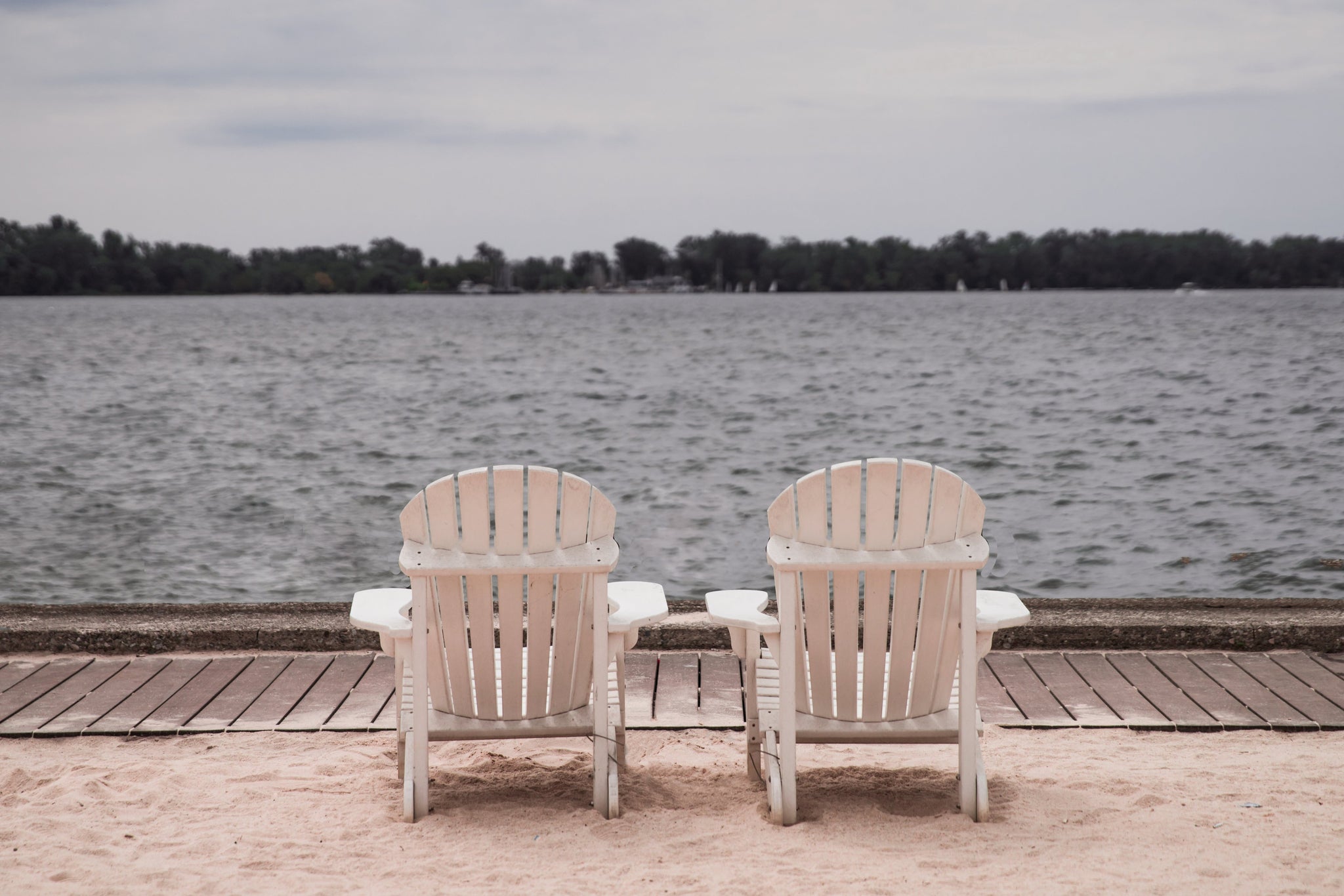Clear Lake Coffee Roasters: Explorer & History Series - Robusta Resilience: Exploring the Bold and Tenacious Side of Coffee - Jan 4, 2024

In the vast world of coffee, where the fragrant beans weave tales of diverse origins and unique flavors, there's a robust contender that demands our attention – Robusta coffee. Often overshadowed by its more nuanced cousin, Arabica, Robusta beans bring a bold and unapologetic character to our coffee cups. In this blog post, we embark on a journey into the resilient world of Robusta, discovering its origins, distinct qualities, and the unparalleled strength that has earned it a well-deserved place in the global coffee culture. So, join us as we delve into the rich and robust allure of the coffee variety that refuses to be overshadowed.
The Life and Times of Robusta
“The robusta variety shows a tendency when planted in selected soils to
produce larger berries and have an improved flavor.”
-Tea & Coffee Trade Journal, July 1917

Once upon a time in specialty coffee, robusta was verboten, the enemy, bad bad bad. The attitude against robusta inside specialty coffee was highly emotional, and for good reason. Robusta had been weaponized by the dominant commercial coffee roasters during price wars that lasted decades and acclimatized consumers to cheap coffee.
As specialty coffee became a self-aware segment of the coffee industry and rallied around its message that coffee can taste significantly better than what you’re used to drinking, it struggled with the inherent stage whisper that followed: “and cost you significantly more money.”
When the coffee industry entered an extended season of consolidation following the second World War, the largest of the large national coffee roasters competed against each other for a greater share of grocery store shelves by lowering prices, and they lowered prices by using less expensive and lower quality green coffee. As a blend component, robusta fit the bill. This nearly across-the-board decrease in quality among large commercial roasters resulted in a corresponding decrease in coffee consumption in the United States and helped set the stage for the rise of specialty coffee.
For specialty coffee roasters, robusta had become more than a symbol for bad cheap coffee, it became the personification of bad and cheap and it wasn’t just business, it felt personal. I was once in a meeting with a dozen volunteers working on an industry project together. When one of the roasters casually mentioned that they used robusta in a blend they marketed as highly caffeinated coffee, another roaster expressed angry dismay, then left the room and didn’t come back.
But that was over 20 years ago. If robusta’s reputation hasn’t been exactly rehabilitated over the years, at least it’s no longer a dirty word. As with its cousin, arabica, not all robusta is created equal and quality can vary significantly. Once considered a true commodity with very little differentiation—two kinds: bad robusta bound to become instant coffee and less bad robusta destined for roasted and ground blends—robusta now appears in a variety of places along the coffee quality continuum. And if we’re being honest, this was always the case; however, the word “arabica,” became ubiquitous in the marketing of specialty coffee, almost synonymous with the word “specialty.” In retrospect, this is somewhat regrettable because the message created an assumption that all robusta is bad and all arabica is good. Both assumptions are not only incorrect, but harmful too.
Judging by demand, robusta clearly has a role to play. According to World Coffee Research (WCR), robusta’s share of coffee production globally has gone from 28% in 1991 to 44% in 2021, corresponding with growth in overall consumption from approximately 90 million bags to over 165 million bags during the same period. If it were not for robusta, much of it grown in locations where arabica would not thrive, coffee demand wouldn’t have simply outpaced coffee supply long ago, demand would have left supply in the dust and we probably don’t want to know what that world looks like. And yet, with climate change, the potential for a world where we grow less coffee than we want to drink is very real.
We don’t know how long robusta has been used in one way or another as a food or beverage. Perhaps, like arabica, people were chewing robusta long before they were brewing robusta. But we do know it wasn’t considered for commercial cultivation until very recently in the history of coffee.
In All About Coffee (1922) W.H. Ukers wrote that in1898, Belgian botanist Emile Laurent came across a species of coffee growing wild in what is today DR Congo. The species was actually known as “Cafea Laurentii” until the Belgian horticultural company that was the first to plant this particular species as a commercial crop renamed it “Coffea Robusta.”
According to J. Berthaud and A. Charrier in Genetic Resources of Cafea (1988) “This species was cultivated after 1850 on the African Atlantic coast, from south Gabon to north Angola, and especially near the Kouilou river. Independently, it was discovered by Grant in 1861 at Bukoba (Tanzania).”
And then, according to WCR:
Cultivation of the species began around 1870 in Congo, using material coming from Zaïre’s Lomami River region, now known as the Democratic Republic of Congo. A subtype of robusta called “kouillou” (later renamed “conilon” via linguistic distortion when it was introduced to Brazil) was observed in the wild by the French in1880 between Gabon and the mouth of the Congo River, mainly along the Kouilou-Nari River region. The species was named C. canephora by the botanist Louis Pierre in 1895. Pierre received a sample of the plant collected in Gabon by the Reverend Théophile Klaine. The name was first published along with a description of the species by Froehner in 1897. In 1898, Edouard Luja, in preparation for the 1900 Paris Exposition, was sent to collect 10 species with economic potential in the Congo. During this mission, Luja collected several thousand seeds in the surroundings of Lusambo of a ‘new’ coffee species (Benoit, 1968). These seeds were probably collected on an early robusta plantation in the region. Belgian Congo became one of the principal breeding centers, from which breeding lines were distributed throughout the tropics.
The difficulty in nailing down who first planted robusta for commercial cultivation and when is probably due to there being so many types of robusta, or C. canephora, if you want to be all lab-coat about it. The different stories could each be associated with a different variety. Nobody “discovered” and started growing robusta commercially. Different people discovered different distinct varieties of robusta at different times and in different places. Presumably, each genetic group in the map below has its own commercial cultivation origin story.

In any case, robusta was so closely associated with Congo that some agronomists and botanist referred to it as “Coffea Congo” in the early days. In the early 20th century, robusta was planted in Java and Indonesia, then India and the Ivory Coast. Coffee farmers liked robusta because it was more resistant to pests and disease than arabica, produced more coffee than arabica, and could be grown under a wider variety circumstances, including low altitude. Robusta also tends to produce coffee sooner after planting (2-3 years) than arabica (3-4 years).
Ambivalence toward robusta seemingly goes way back. Ukers writes that imports of robusta into the United States were not insignificant in the early days of the 20th century but fell off after 1912 when the New York Coffee and Sugar Exchange (NYCSE) began prohibiting robusta deliveries on Exchange contracts after March 1, 1912. The Exchange contract used at the time actually mentions within the contract itself that robusta is excluded.

According to Mark Pendergrast in Uncommon Grounds, "The NYCSE's prohibition on Robusta coffee deliveries was motivated by a desire to protect the exchange's reputation and the integrity of its market."
To add insult to injury, in 1921 the United States Bureau of Chemistry—precursor to the FDA—ruled that “coffea robusta could not be sold as Java coffee, or under any form of labeling which tended either directly or indirectly to create the impression that it was Coffea arabica, so long and favorably known as Java coffee.” Ukers adds that “This was in line with the Department of Agriculture's previous definition that coffee was the seed of the Coffea arabica or Coffea liberica, and that Java coffee was Coffea arabica from Java.” Robusta was first planted on Java in 1902 and after just 16 years robusta was 85% of the coffee growing on Java because rust disease had destroyed most of the arabica growing under 3,000 feet.
Eventually, in 1931, the NYCSE allowed robusta trading due to improvements in quality and the steady increase in production of soluble coffees. With the success of Nescafe, first introduced in 1938, robusta became a player. Instant coffee would remain the primary use for robusta in the United States until the 50’s. Between 1950 and 1953, green coffee prices increased nearly 100% and large roasters began to use more robusta in their blends, a trend that would continue. By the early 1970’s, consumption of instant coffee and regular coffee were almost neck and neck, presumably, because they tasted almost the same.
As it always seems to do coffee survived. In part, this was due to Americans shifting from percolators to drip brewers (thank you Joe DiMaggio), so coffee tasted better. The emergence of the specialty coffee sector also helped to stop the decline in consumption and over time influenced even fast food and convenience store chains to make incremental improvements to quality.
Today, coffee is under threat due to climate change and we face the very real possibility of a world where coffee supply falls short of demand. It’s time for robusta to be reconsidered—especially in the U.S.—and no longer subject to “prior constraint.” It was probably always nonsensical to assume all robusta was the same. It’s time to assume instead that the right robusta at the right time and in the right place is the right move.

Six reasons for making Clear Lake Coffee Roasters - CLCR - your go-to coffee roaster:
☕️ We are a local family-run business located in the heart of Clear Lake, Iowa.
☕️ We go to great lengths to find only the finest and ethically sourced coffee around, from the top 2% of coffee beans in the world.
☕️ We only source 100% certified Arabica coffee beans, carefully hand-selecting each coffee based on specific quality and taste attributes.
☕️ Our roasting process has been refined over the years and each roast profile is individually designed to complement the nuances of the coffee we source, from Cup of Excellence (COE) award-winning producers.
☕️ By roasting in smaller batches, we can ensure our coffee is ALWAYS fresh, in fact, we roast your coffee only after you place an order - the same day your order ships out.
☕️ At CLCR, we are dedicated to a single mission: the unyielding pursuit of coffee perfection in every cup.
We would give you more reasons, but rather than reading it's better if you visit our website, purchase a bag or two, and experience a unique caffeinated or half-caff journey for yourself 😊!
Explore goodness. Click. Buy. Smile.

Clear Lake City Park Beach - Named one of USA Today's top 50 Beaches in the United States.

Leave a comment
Please note, comments must be approved before they are published